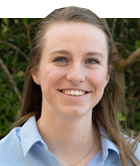
Getting cows pregnant not only returns them to productivity quicker, the value of those calves can provide a significant revenue stream for the dairy. While in recent years this has often turned to marketing dairy-beef crosses, selling replacement dairy heifers can have its place, too.
A strong demand for Guernsey animals, both domestically and internationally, has been helpful in keeping breed values up even through this roller-coaster year, wrote Jason Yurs in his Director’s Column in the Guernsey Breeder’s Journal. Yurs manages the Hoard’s Dairyman Farm, which is currently milking approximately 300 Guernseys.
Meeting that demand for Guernseys will require a committed approach to reproduction. The obvious choice for creating more valuable replacement females is using sexed semen. Guernsey breeders are making use of this tool as more sex-sorted semen continues to sell through the Guernsey Gold Sire program, Yurs added.
Using sexed semen wisely means choosing the most fertile heifers and cows. Daughter Pregnancy Rate (DPR), Genomic DPR, and Heifer Conception Rate are good tools to help make those decisions.
Yurs shared data from the Hoard’s Dairyman Farm that clearly shows DPR is a useful indicator of animals becoming pregnant (see table). Out of 193 pregnant heifers, the ones with a genomic DPR of +1.0 averaged just 1.28 services per conception. Each of the heifers with a negative DPR needed about two more straws of semen to settle.
Genomic DPR | # Heifers | Average DPR | Average Services Per Conception |
< 0 | 48 | -0.78 | 3.19 |
0 to +1.0 | 76 | +0.51 | 2.20 |
> +1.0 | 69 | +1.76 | 1.28 |
Heat detection must be top-notch to get cows bred appropriately, too. Yurs said they have found success when breeding about 18 hours after standing heat, when this is possible. As always, healthy heifers are also more likely to get pregnant than stunted ones.
No matter what breed (or breeds) you milk, creating valuable females will be a cornerstone of the dairy. These tools are ones all dairymen should keep in mind.

Katelyn Allen joined the Hoard’s Dairyman team as the Publications Editor in August 2019 and is now an associate editor. Katelyn is a 2019 graduate of Virginia Tech, where she majored in dairy science and minored in communication. Katelyn grew up on her family’s registered Holstein dairy, Glen-Toctin Farm, in Jefferson, Md.








